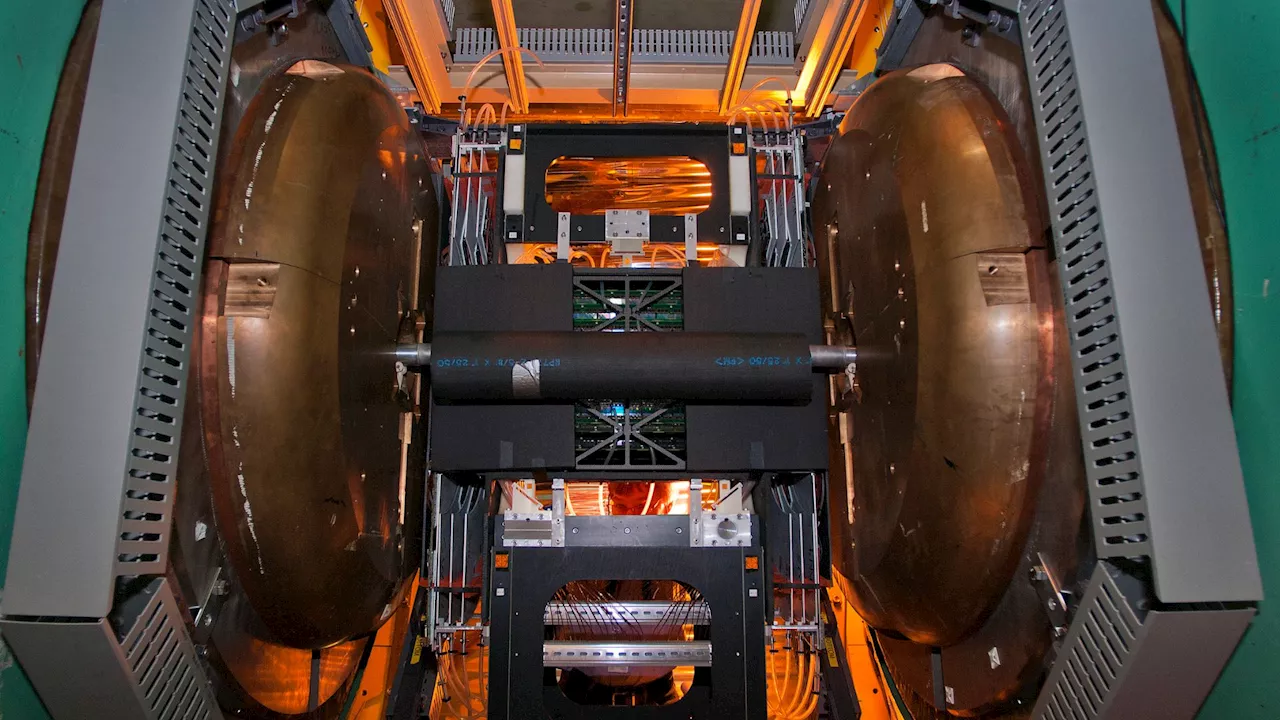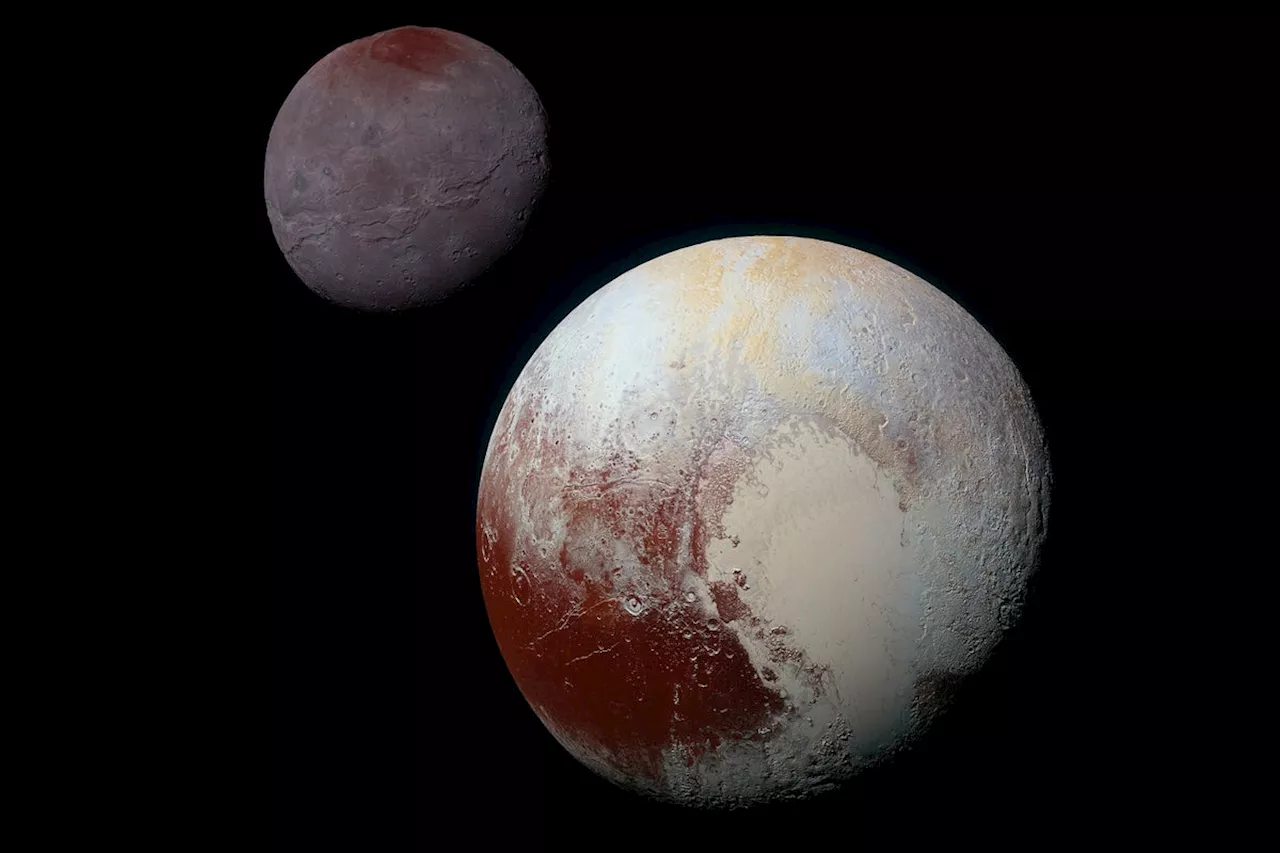New analysis from the PHENIX experiment at RHIC provides evidence for the creation of quark-gluon plasma (QGP) in collisions of small nuclei, even though energy deposit was thought to be insufficient. The findings, published in, show that energetic particles lose energy and slow down in these collisions, a key signature of QGP formation. This discovery challenges previous understanding and opens new avenues for studying the primordial soup that permeated the universe shortly after the Big Bang.
A new analysis of data from the PHENIX experiment at the Relativistic Heavy Ion Collider ( RHIC ) reveals fresh evidence that collisions of even very small nuclei with large ones might create tiny specks of a quark-gluon plasma ( QGP ). Scientists believe such a substance of free quarks and gluons, the building blocks of protons and neutrons, permeated the universe a fraction of a second after the Big Bang.
RHIC's energetic smashups of gold ions -- the nuclei of gold atoms that have been stripped of their electrons -- routinely create a QGP by 'melting' these nuclear building blocks so scientists can study the QGP's properties. Physicists originally thought that collisions of smaller ions with large ones wouldn't create a QGP because the small ion wouldn't deposit enough energy to melt the large ion's protons and neutrons. But evidence from PHENIX has long suggested that these small collision systems generate particle flow patterns that are consistent with the existence of tiny specks of the primordial soup, the QGP. The new findings, just published in, bolster the case for these tiny droplets of the QGP. The paper provides the first direct evidence that energetic particles generated in RHIC's small collision systems sometimes lose energy and slow down significantly on the way out. 'We found, for the first time in a small collision system, the suppression of energetic particles, which is one of two main pieces of evidence for the QGP,' said PHENIX Collaboration Spokesperson Yasuyuki Akiba, a physicist at Japan's RIKEN Nishina Center for Accelerator-Based Science and Experiment Group Leader at the RIKEN-BNL Research Center (RBRC) at Brookhaven Lab. Looking for the suppression of high-energy jets of particles, or jet-quenching, has been a key goal from the earliest days at RHIC, a DOE Office of Science user facility for nuclear physics research that began operating at Brookhaven Lab in 2000. Jets are created when a quark or gluon within a proton or neutron in one of RHIC's ion beams collides intensely with a quark or gluon in the nuclear particles that make up the beam traveling in the opposite direction. These strong interactions can kick single quarks or gluons free from the colliding nuclear building blocks with tremendous amounts of energy, which quickly transforms the energetic particles into cascades, or jets, of other particles. If the collision doesn't melt the nuclear matter into a soup of free quarks and gluons -- the QGP -- then these energetic jets of particles, or their decay products, sail out freely to be counted by RHIC's detectors. But if the collisions do form a QGP, the kicked-free quark or gluon, despite its energy, gets caught up in interactions with the quarks and gluons that make up the plasma. 'Those interactions lead to energy loss,' explained Gabor David, a PHENIX physicist from Stony Brook University (SBU) who was one of the leaders of the new analysis. 'You can think about it like the difference between running through air and running through water,' he said. The QGP is like the water; it slows the particles down. As a result, jets reach the detector with only a fraction of their original energy. To look for this suppression, the physicists first must estimate the number of energetic particles that would be expected from the gold-gold smashups by mathematically scaling up from simple proton-proton collisions to the number of protons and neutrons involved in collisions of heavier ions such as gold. The calculated values indirectly indicate whether the collision happens dead-center between the two gold ions or if it's a glancing collision where the ions sideswipe one another at the edges. Central collisions are expected to create more jets than peripheral ones. But they're also more likely to generate bigger QGP and therefore higher jet suppression. 'We expected we should see 1,000 times the number of energetic particles, or jets, in the most central gold-gold collisions compared to proton-proton collisions,' Akiba said. 'But we saw only about 200 times the proton-proton level, one-fifth the expected number. That's a factor of five suppression.' This jet suppression is a clear sign that the gold-gold collisions are generating the QGP
Quark-Gluon Plasma QGP Nuclear Collisions RHIC PHENIX Experiment Jet Quenching Particle Physics
United States Latest News, United States Headlines
Similar News:You can also read news stories similar to this one that we have collected from other news sources.
 Small Nuclear Collisions Create Quark-Gluon Plasma at RHICScientists at the Relativistic Heavy Ion Collider (RHIC) have made a groundbreaking discovery: collisions of small nuclei with larger ones can create quark-gluon plasma (QGP), a state of matter that existed shortly after the Big Bang. This finding, based on the observation of 'jet quenching,' challenges the previous belief that only large nuclei could produce QGP.
Small Nuclear Collisions Create Quark-Gluon Plasma at RHICScientists at the Relativistic Heavy Ion Collider (RHIC) have made a groundbreaking discovery: collisions of small nuclei with larger ones can create quark-gluon plasma (QGP), a state of matter that existed shortly after the Big Bang. This finding, based on the observation of 'jet quenching,' challenges the previous belief that only large nuclei could produce QGP.
Read more »
 Ancient Hotspot Formed the Great Lakes, Study FindsNew research links the formation of the Great Lakes to a hotspot that was active hundreds of millions of years ago.
Ancient Hotspot Formed the Great Lakes, Study FindsNew research links the formation of the Great Lakes to a hotspot that was active hundreds of millions of years ago.
Read more »
 Pluto and Charon Formed in a Brief, 'Kiss-and-Capture' CollisionNew research suggests that Pluto captured its largest moon, Charon, billions of years ago in a brief, icy 'kiss.' The two bodies grazed each other, briefly merging before separating to form the binary system we see today. This 'kiss-and-capture' process offers a new theory for moon formation and could help scientists better understand the structural strength of icy worlds in the Kuiper Belt.
Pluto and Charon Formed in a Brief, 'Kiss-and-Capture' CollisionNew research suggests that Pluto captured its largest moon, Charon, billions of years ago in a brief, icy 'kiss.' The two bodies grazed each other, briefly merging before separating to form the binary system we see today. This 'kiss-and-capture' process offers a new theory for moon formation and could help scientists better understand the structural strength of icy worlds in the Kuiper Belt.
Read more »
 Pluto and Charon's 'Cosmic Kiss' Formed Their Orbit, Scientists SayScientists propose that Pluto and its moon Charon formed their unique orbit after a giant impact that didn't destroy either body. The collision, dubbed a 'kiss-and-capture' event, involved the two celestial bodies briefly merging before separating and entering a linked orbit. This unusual event, which likely lasted about 10 to 15 hours, sheds light on the formation of binary planetary systems in the Kuiper Belt.
Pluto and Charon's 'Cosmic Kiss' Formed Their Orbit, Scientists SayScientists propose that Pluto and its moon Charon formed their unique orbit after a giant impact that didn't destroy either body. The collision, dubbed a 'kiss-and-capture' event, involved the two celestial bodies briefly merging before separating and entering a linked orbit. This unusual event, which likely lasted about 10 to 15 hours, sheds light on the formation of binary planetary systems in the Kuiper Belt.
Read more »
![]() Catalyst Brands Formed with Iconic American Brands, Forever 21 Future UncertainBrookfield, Authentic Brands Group and Shein launch Catalyst Brands, a new venture encompassing Lucky Brand, Aéropostale, Nautica, Eddie Bauer, Brooks Brothers, and JCPenney. However, Forever 21's future is unclear as the company explores strategic alternatives for the struggling retailer. Extensive management changes occur with Marc Rosen leading Catalyst Brands.
Catalyst Brands Formed with Iconic American Brands, Forever 21 Future UncertainBrookfield, Authentic Brands Group and Shein launch Catalyst Brands, a new venture encompassing Lucky Brand, Aéropostale, Nautica, Eddie Bauer, Brooks Brothers, and JCPenney. However, Forever 21's future is unclear as the company explores strategic alternatives for the struggling retailer. Extensive management changes occur with Marc Rosen leading Catalyst Brands.
Read more »
 Committee Formed to Bring NHL Hockey Back to ArizonaA committee has been established with the goal of returning NHL hockey to Arizona. The committee, led by Maricopa County Board of Supervisors Chair Tom Galvin, has the backing of NHL Commissioner Gary Bettman.
Committee Formed to Bring NHL Hockey Back to ArizonaA committee has been established with the goal of returning NHL hockey to Arizona. The committee, led by Maricopa County Board of Supervisors Chair Tom Galvin, has the backing of NHL Commissioner Gary Bettman.
Read more »
